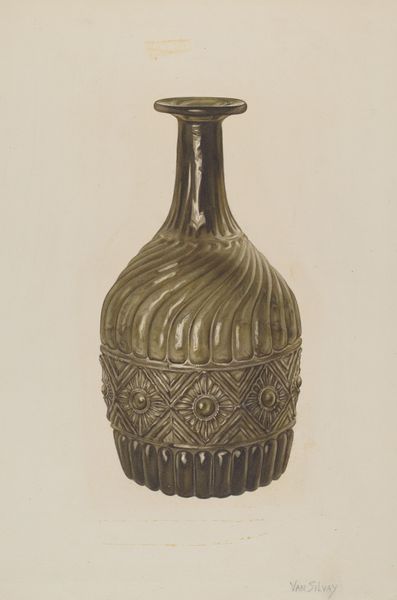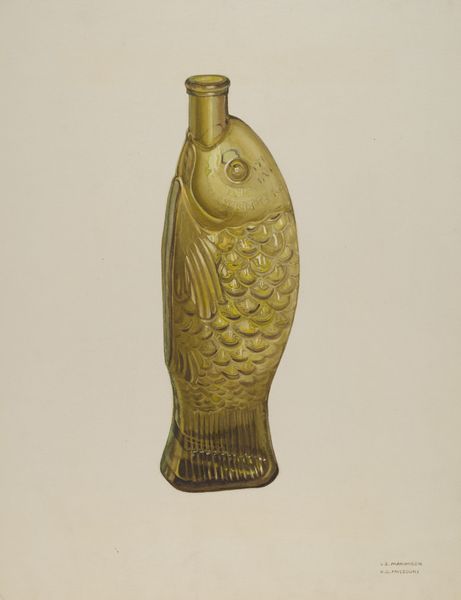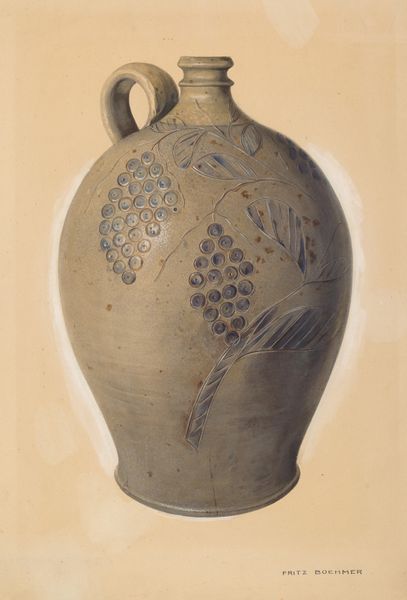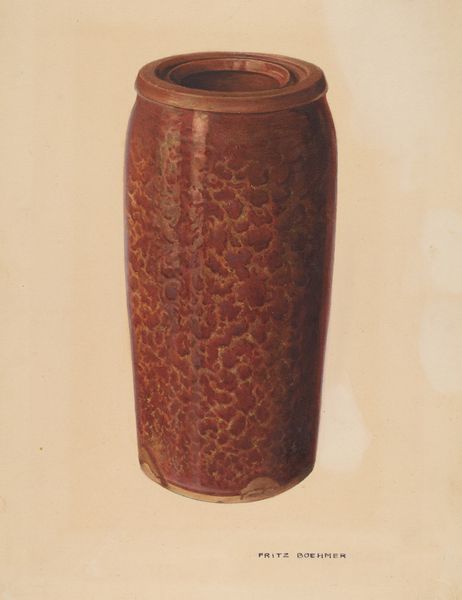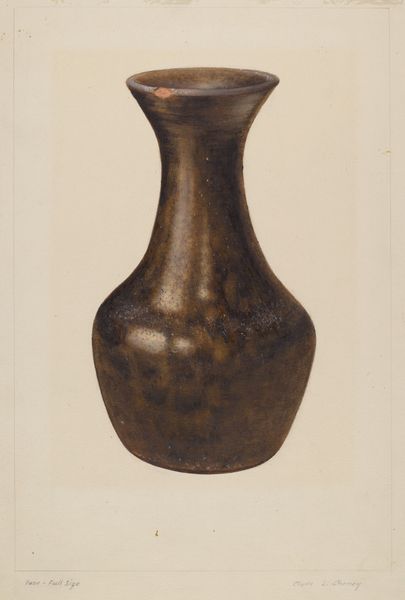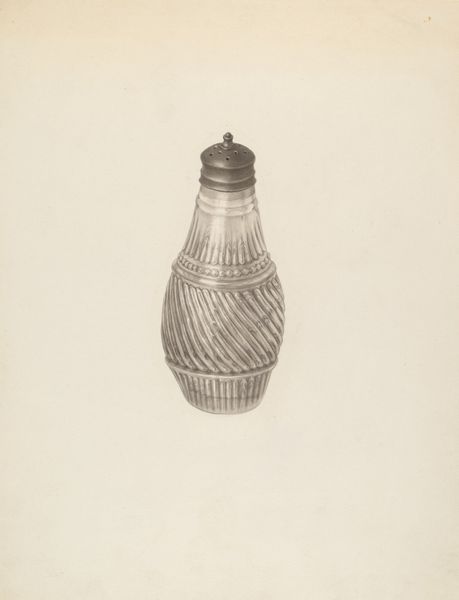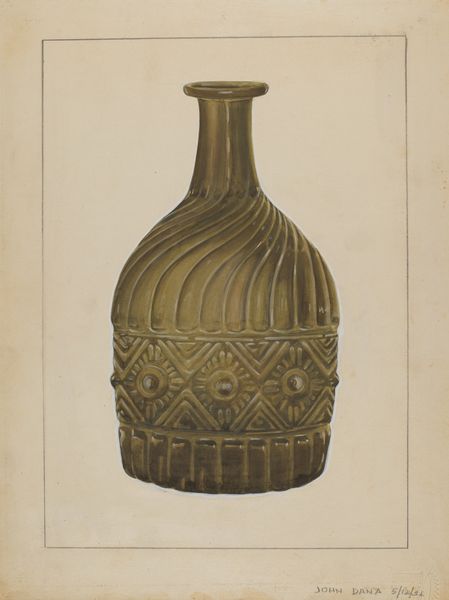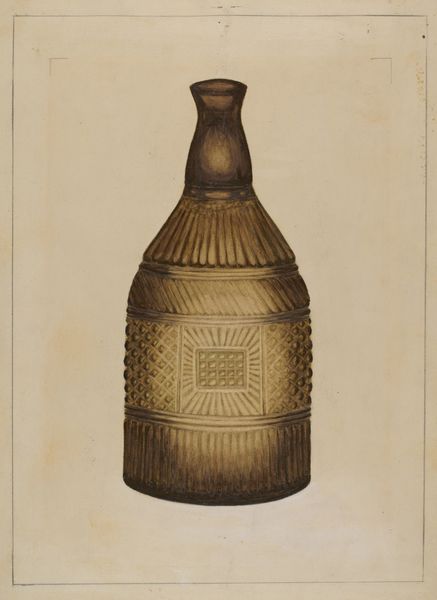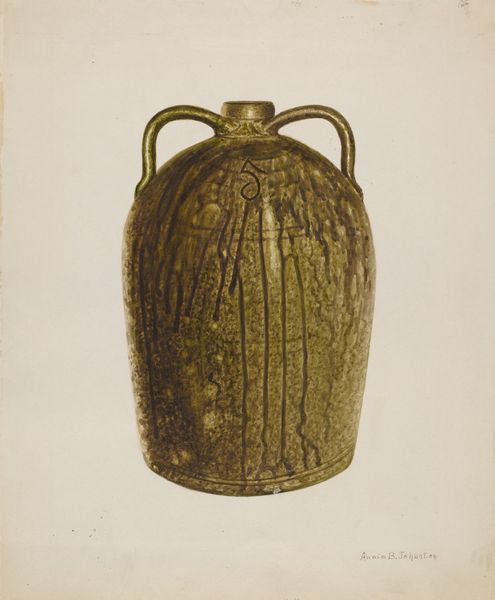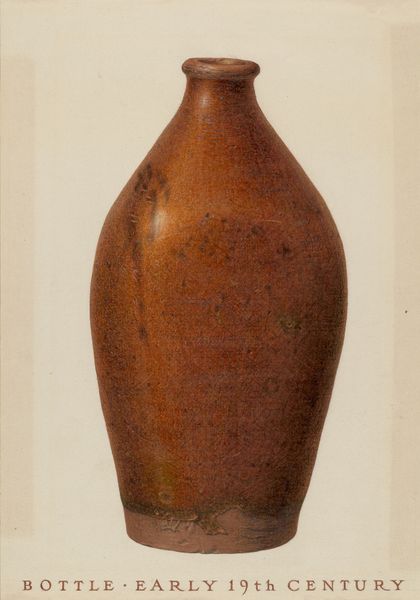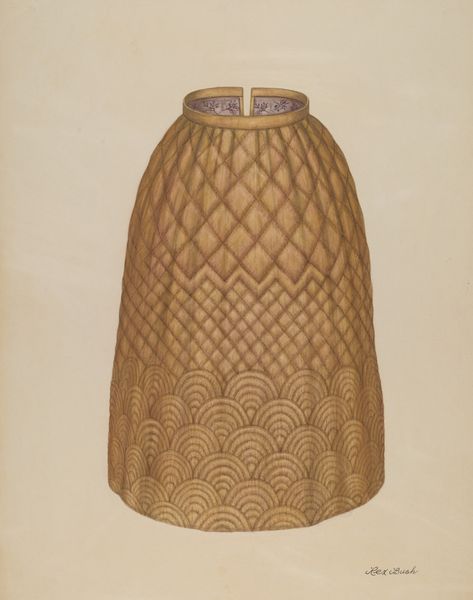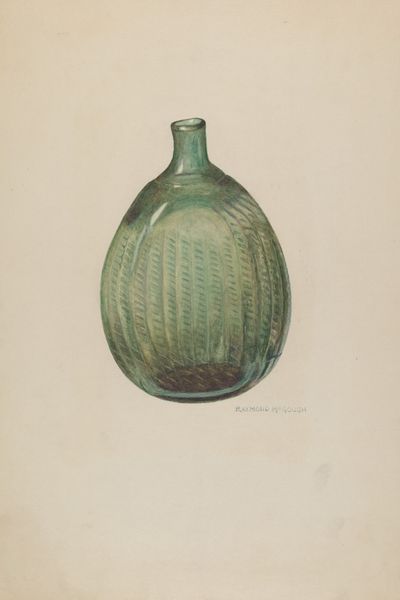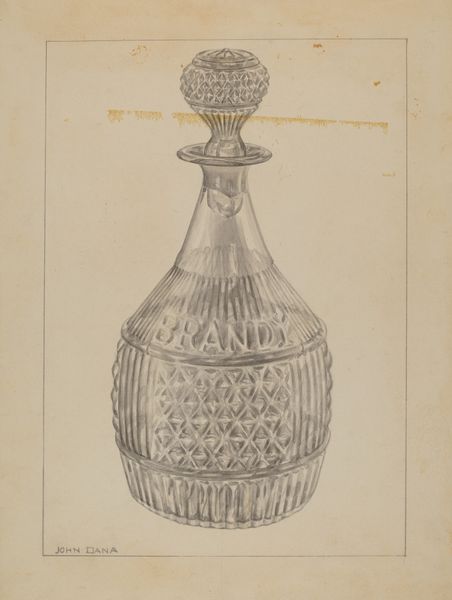
drawing, ceramic, watercolor
#
drawing
#
ceramic
#
form
#
watercolor
#
stoneware
#
ceramic
#
watercolor
Dimensions: overall: 44 x 29.8 cm (17 5/16 x 11 3/4 in.)
Copyright: National Gallery of Art: CC0 1.0
Curator: Let’s take a look at Van Silvay's "Decanter" from 1939. It's rendered in watercolor and drawing, depicting what seems to be a ceramic vessel. What are your initial impressions? Editor: I find it oddly serene. There’s something about the muted tones and the almost obsessive detail in the rendering of the ceramic work that's captivating. It makes you consider the labour and the hand that shaped both the real object and the drawing itself. Curator: Indeed. It's fascinating to consider the interplay between the high art of watercolor and the craft embodied by the decanter. I'm curious about the original object. Was it mass-produced or handcrafted? What kind of social context would a piece like this inhabit? What type of factory might have created such work in the late 1930s? Editor: From a historical perspective, ceramics like this in the 1930s straddled the line between functional object and decorative art, often marketed through department stores. Museums began to seriously collect decorative arts from this period and offer new spaces for such works to be displayed, moving the needle for the public’s perception of functional ceramic. Curator: The use of watercolor lends a fragility that belies the solidity of ceramic, prompting me to contemplate the process by which Silvay worked. Did he value precision in representation? Did he view drawing from real life as labor? The light mimics the surface and detail wonderfully. Editor: I agree. Its presentation challenges the notion of what constitutes 'art', blurring the lines between design, utility, and fine art. Moreover, its simplicity implies a social commentary; It's accessible. It implies everyday life in a time of immense cultural change and a potential growth for access to museum spaces. Curator: I see that clearly now. Silvay asks the audience to regard something commonplace through an attentive study in artistic value. It begs the question, who had access to such ceramics, how it would be showcased, and in what ways we define artistic value today? Editor: Exactly. Silvay presents us with an artistic intersection worth thinking about, even today. It makes you reflect on how our own societal narratives shape our present perception of beauty, material, craft, and presentation in modern social climates. Curator: Very well said!
Comments
No comments
Be the first to comment and join the conversation on the ultimate creative platform.
